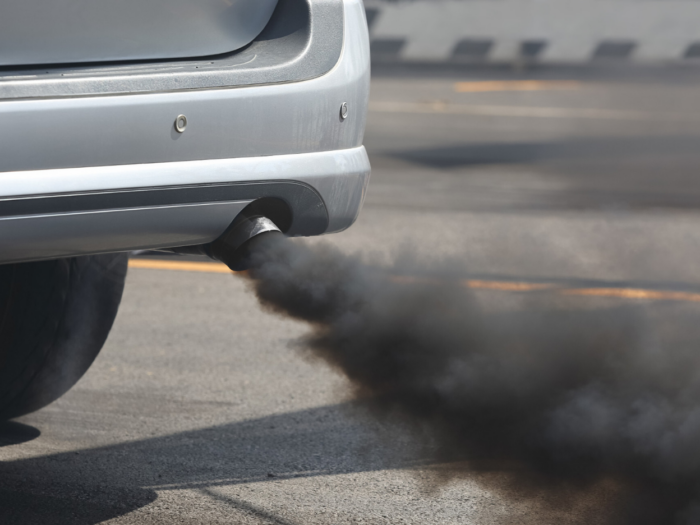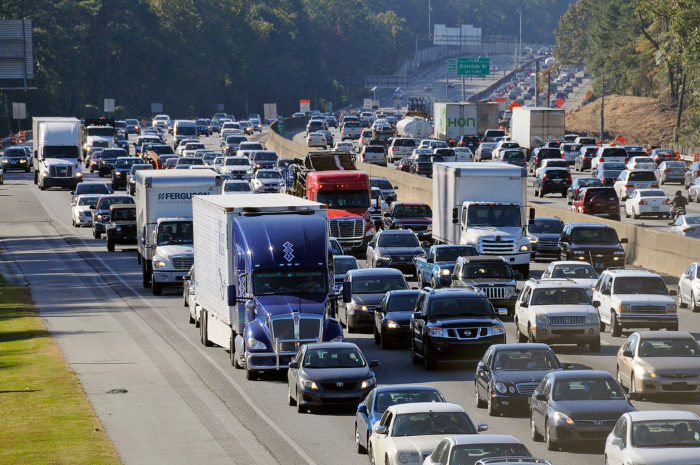Reimagining our transportation system
From the expert.
A message from SELC Senior Attorney Brian Gist.
Transportation pollution is a leading cause of climate change and the leading producer of greenhouse gas emissions, in the South and nationally. But to ensure people have the choice to walk instead of drive, communities must be equipped with alternatives such as safe, walkable streets.
Now, thanks to an unprecedented federal infrastructure investment, we have a historic opportunity to imagine how we get around in the South.
This isn’t something that can wait.
Brian Gist, Senior Attorney
“If we’re serious about addressing the climate crisis and we understand the urgency that we need to move, that urgency needs to be reflected in how we’re investing in our transportation system now,” said SELC Senior Attorney Brian Gist. “This isn’t something that can wait.”
How does street safety affect the climate crisis?

It’s really very simple: Pedestrian-friendly infrastructure means less driving and, therefore, fewer emissions.
The transportation sector emitted 1.7 billion metric tons of greenhouse gases in 2021, according to the Congressional Budget Office. Nearly 83 percent of those emissions are attributed to motor vehicles, which are often necessary in sprawling Southern cities.
What is the Bipartisan Infrastructure Law?
Congress signed this historic legislation into law on November 6, 2021. It provides $1.2 trillion for projects that address mounting infrastructure challenges, and clear policy objectives directing states to address climate and equity challenges how they best see fit.
“SELC is uniquely poised for this moment because we’re a place-based organization,” said Gist. “That allows us to leverage our national expertise but ground it with the realities of local communities.”
How is Atlanta transforming transportation and addressing past mistakes?
During the 1950s and ’60s, historically Black and low-wealth neighborhoods were split to make way for Atlanta’s new interstate highway system. These misguided decisions divided communities and left them exposed to the unpleasant consequences of heavy vehicular traffic, including poor air quality, noise pollution, and pedestrian safety concerns. With the help of funds provided by the Bipartisan Infrastructure Bill, we have a historic opportunity to reconnect communities across the South.

With the encouragement of SELC, the City of Atlanta is pursuing funding for a pedestrian-friendly initiative called The Stitch Project through the Reconnecting Communities Grant. The goal is to construct a cap over the Downtown Connector [interstate highway] to reconnect communities in Downtown Atlanta. In the process, the Stitch would retrofit existing roadways with pedestrian-safe enhancements like bike lanes with barriers, sidewalk installations, and crosswalk safety measures.
Funds from the Bipartisan Infrastructure Law are distributed both directly to the states and through a series of competitive grant programs. In Georgia, this translates to a 21 percent increase in direct funding for transportation.
We can’t expect people to drive less if we don’t give them a safe, pleasant alternative. We’re trying to build transportation projects that achieve our climate goals and also build a more equitable transportation system.
Brian Gist, Senior Attorney
While the cash infusion is undoubtedly impactful, we find ourselves at a treacherous crossroads of opportunity and risk. Although the administration can ensure that its climate and equity goals are reflected in its competitive grant awards, the use of direct funding is controlled by the states. Thus, we face the risk of repeating past mistakes by doubling down on short-sighted projects like road expansion.
For his part, Gist is excited about what the future holds:
“This is such an exciting moment because we have a confluence of three things,” he said. “First, we have clear policy direction to focus on climate inequity. Second, we have the appetite at the local level to pursue different types of projects; to build things differently than we have in the past. And third, we have a historic amount of money available to do this.”
Watch the full video to learn more.
